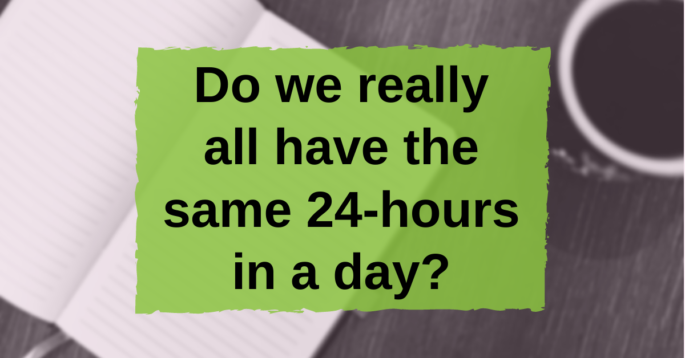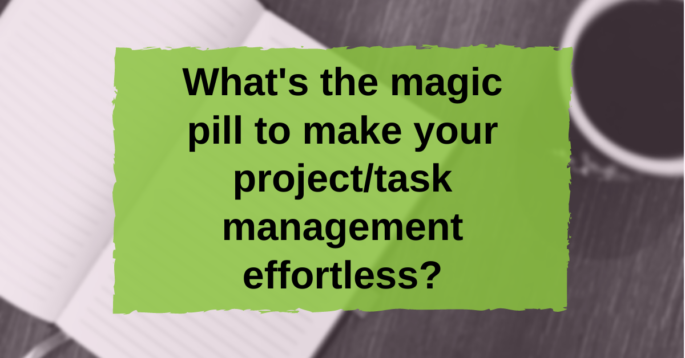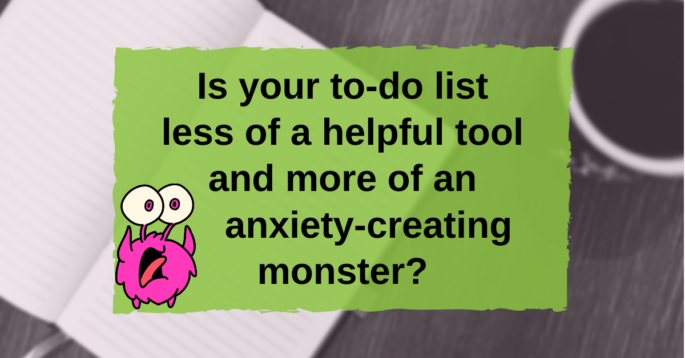There’s a short question I like to ask myself about once a week: What will make this easier?
It’s such a simple question that it’s easy to overlook its usefulness.
This is an especially helpful question when it comes to habits you’re trying to develop.
Let’s say you’ve decided to create a habit of waking up at 6:30 am.
You might start by setting your alarm for 6:30 every morning to get up.
If you’re like most people, by day three you’re exhausted because you’re not getting enough sleep.
What will make getting up at 6:30 am easier?
The answer might be to go to bed earlier, so you’re getting more sleep.
And what will make that easier? Getting ready for bed earlier.
And what will make that easier? Being specific about what “earlier” means, let’s say 9:30 pm.
And what will make that easier? Not stressing about falling asleep at a specific time.
You might use the technique of habit shaping (described in James Clear’s book Atomic Habits) to start getting ready for bed earlier and not set your alarm for 6:30 am yet. Instead, phase 1 of getting up earlier is regularly getting ready for bed at 9:30. Phase 2 might be laying down to go to sleep at 10 pm. Then you might add other phases before introducing the last phase of setting your alarm for 6:30 am.
It seems so simple to create a habit of getting up at 6:30 every morning, but if you don’t take a step back and ask, “what will make this easier?” you’ll miss necessary steps to create this habit successfully.
What habit are you trying to create?
What would make that easier?
Author: EvieBurke
Do we really all have the same 24-hours in a day?
A common quote that goes around a few times a year is:
We all have the same 24-hours in the day.
It’s meant to be motivating to point out that you have the same number of hours each day as very successful people like Oprah, Tony Robbins, Beyonce, or the person you most admire in life or business.
It can be motivating.
It can also be misleading.
This leads to my question: Do we really all have the same 24-hours in a day?
People like Oprah or Beyonce have help. They hire people to help them accomplish more each day. There are assistants, nannies, and other employees that help them daily.
This means that they have more time because their employees are doing some tasks and projects for them.
That’s great for them! But don’t set expectations for yourself based on their success or what you perceive they accomplish.
Instead, set your expectations for yourself based on where you are and what you can accomplish.
What does your inbox look like?
What does your inbox look like?
If it’s anything like mine, a few emails are hanging around in there.
Okay, so maybe there are more than a few.
People assume that my inbox is pretty empty. It’s not.
However, compared to some people’s inboxes, it is.
I occasionally have conversations with people who aspire to live in the mythical land of having nothing in their inbox. Everything is read, replied to, and sorted out of it.
But that never happens. They run out of time to do anything other than respond to the time-sensitive emails, and everything else ends up piling up.
Two things to keep in mind when it comes to your email:
- You don’t need to be at “Inbox Zero.” Instead, you should have it at a level that is manageable for you.
- If you don’t put time for your email on your schedule or to-do list, you’ll always run out of time for it.
All time spent in your email is not equal. It’s easy to say, “set aside time for your email.” But you need to schedule different purposes to be in your email.
Set time aside to sort your email.
You might be able to sort it in 15 minutes, but you won’t be able to read things or respond to everything in that time.
Sort your emails into these categories and schedule time for them:
- Things you need more time to read.
You might put these emails into a separate folder and come back to read them later. Most newsletters will fall into this category. - Decisions to be made or things to research.
Will you attend that networking event? What’s the next step for that project that someone’s asking about? Do you remember who we hired to do that thing two years ago? These things need to be put individually on your to-do list. If you leave them in your email, they won’t get done. - Responses that need to be written.
Set time aside to respond to your email. This might be regarding the decisions you made, or it might be seemingly quick responses (that never actually seem to be quick).
Set time aside for these different actions for your email and your email will be more manageable!
You might have different email categories on your to-do list, and I’d love to know what they are! Share in the comments.
What’s the magic pill to make your project/task management effortless?
A question I often get is, “what project/task management app do you use or recommend?”
Often the real question is, “What’s the magic pill to make my project/task management effortless?”
I don’t use a project/task management app.
And I generally won’t recommend someone start there to get organized.
If you don’t know how to effectively project/task manage, then adding the complexity of learning new software will make your project/task management that much harder.
You probably are busy and have many things happening in your business and life if you’re looking at adding this kind of management app to your business. But it won’t build the foundation for you.
If you:
- don’t know what your projects and tasks are
- don’t have your processes and systems set up
Then how can you expect an app to manage them for you?
If you’re moving into a house, you have to decide what goes into each room, closet, cabinet, or drawer before you put things in them.
You can’t effectively use the app if you don’t know what your projects and tasks are or you don’t know your processes and systems.
So, what’s the magic pill to make your project/task management effortless?
Take the time to lay out your projects and tasks and set up your processes and systems.
If you need help with this, reach out and we can have a chat!
Is your to-do list less of a helpful tool and more of an anxiety-creating monster?
At least once a year, I come across an article or video about how to-do lists don’t work and we shouldn’t use them.
Their definition of a to-do list tends to fall into one of two categories:
- The list of everything you want and need to do
- The list of things you plan to get done if today is the perfect day with no interruptions or unexpected sidetracks AND if you can get 12 hours of work done in 7 or less!
A to-do list is less of a helpful tool and more of an anxiety-creating monster with either of those definitions.
Your to-do list can be a helpful tool that keeps you on track with your goals.
Don’t get me wrong, there is a place for the list of everything you want and need to do.
As David Allen says:
Your mind is for having ideas, not holding them.
Your daily to-do list is not your everything list. Instead, your daily to-do list is a list of items that you plan on completing taking into account your appointments and normal interruptions.
I already hear you saying, “But I can’t plan for my interruptions. That’s why they’re interruptions!”
One of the common reasons I hear for not creating a to-do list is, “I never can get through it because of the unexpected interruptions! It’s so frustrating!”
This is a cycle that prevents you from creating a daily to-do list that works for you.
How long will you let this cycle hold you back?
Let me know if you’d like to have a chat about how to create a to-do list that works for you.





